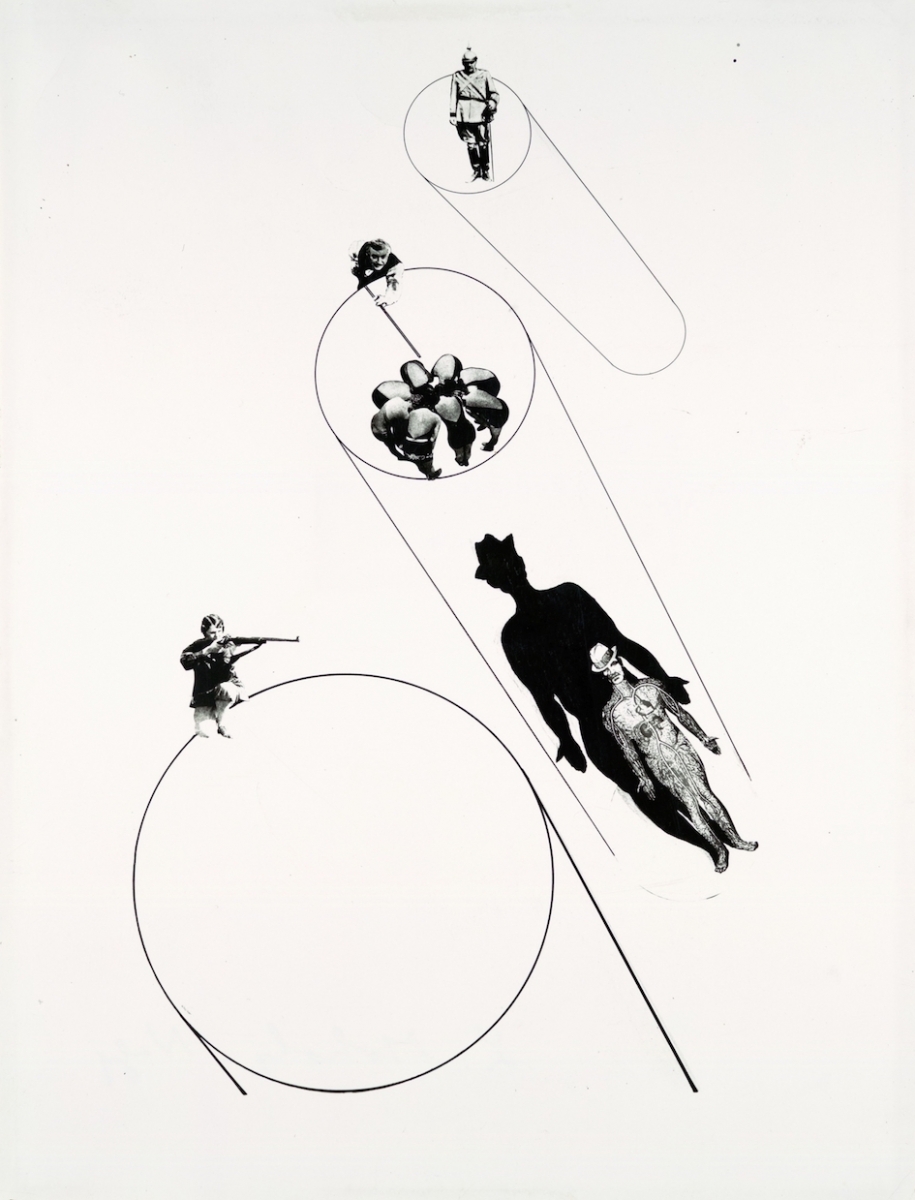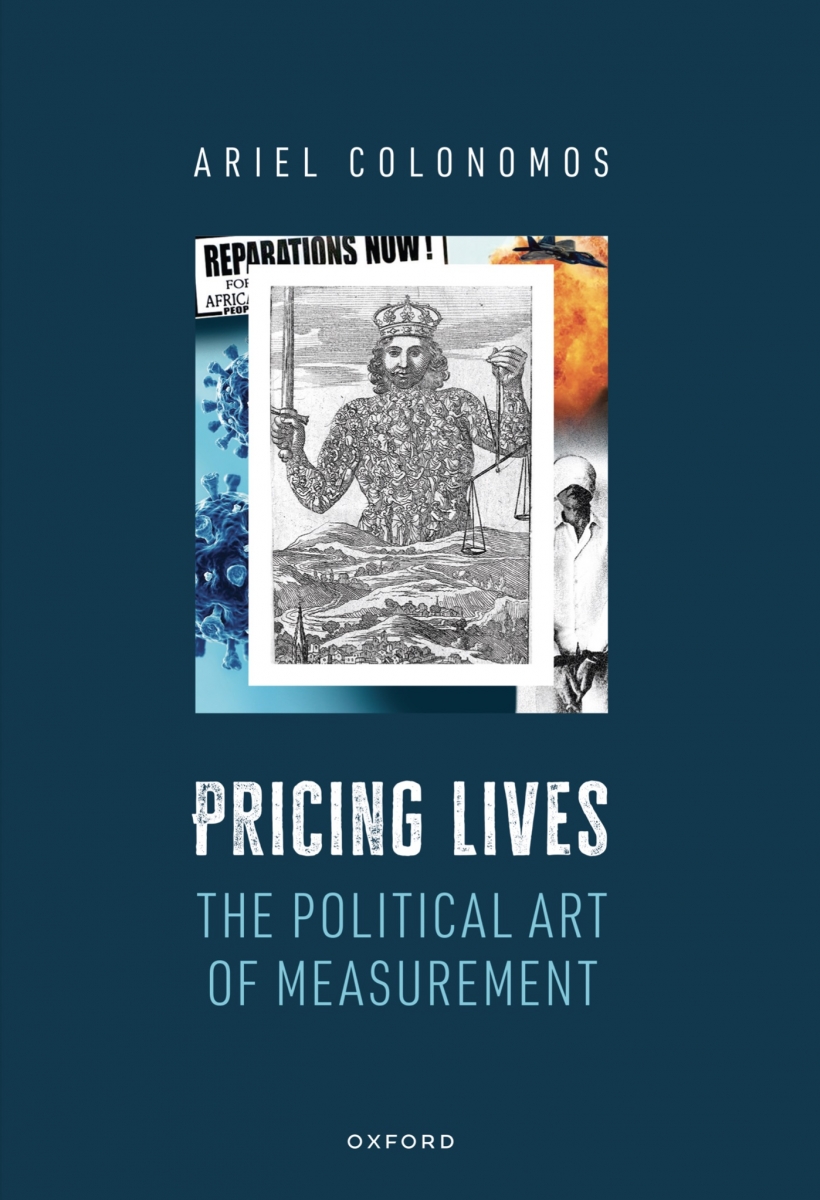Why are (human) lives political? Interview with Ariel Colonomos

How do we price lives? This question, far from being rhetorical, refers to notions that lie at the core of the political. Ethically, from a principled approach perspective, lives have an infinite value. However, politically, lives can be valued in material terms, i.e. they can be put in balance with material interest, whether these interests are monetary or political (such as the national interest). Ariel Colonomos, author of the recently published Pricing Lives (Oxford University Press, 2023), answers our questions and helps us better understand this crucial philosophical question.
Who gives the value of human life? Who pays and who is paid?
Human lives are one of the two elements that are constitutive of an equilibrium where lives are put in balance with interests. This balance between lives and interests, I argue, is constitutive of the political as a sphere. As in every other form of exchange, we can use one element to measure the other. This is the reason why lives are the measure of our interests, as much as interests are the measure of our lives. Indeed, we pay for lives by making concessions with our interests (whether they are political, such as in the field of security, what we consider to be our “national interest”, or economic), and, we pay with lives in pursuit of some of the goals that constitute for us primary interests (in war, for example, but, as I argue in the book, in many other fields as well, such as in the domain of global health). This balance is constitutive of the political, in so far as measurement is the challenge of politics defined as an artand maintaining the stability of that delicate equilibrium is an essential task. I borrow examples from different countries and different time periods: I want to show how this principle is widely shared throughout time and space.
States have the upper hand in this process and they usually rule over who gets what, as well as who must sacrifice their lives and who gets to be saved. However, we see two other players in this game: markets and communities. The market is a place where these exchanges take place—i.e. when claims for reparations are filed, when companies get fined because of the harm they might cause to the environment, or when insurance companies price the lives of hostages. Communities also take an active role and, depending on the political context they are in, could even have a bigger role in the balancing of lives and interests. Communities get reparations for historical injustices, “communities” of victims in the U.S. were granted reparations in the aftermath of 9/11. We may consider that communities in the Amazon should get reparations because of the damages caused to the environment. I also discuss in my book other cases that are related to migration, where I argue that communities of migrants should benefit from financial support when their lives are endangered.
Are lives priced equally? What about kamikazes and suicide bombers?
 Lives come with different prices, precisely because this political equilibrium is contextual. Kamikazes and suicide bombers are used to reach military and therefore political objectives. The number of lives that are disposed of to reach those objectives is an indicator of the value attributed to the interests that combatants are pursuing. Today in the Western world, we find a greater reluctance to pay with lives in pursuit of the national interest of states (which does not mean that heroism is no longer a shared value within the military or more at large among civilians, or that heroes disappeared from the surface of the earth). Both historians such as Kantorowicz and political scientists in IR have pointed to this phenomenon. Because interests are defined in a different manner that contrasts with the way they were framed in the past, lives matter differently. In my book, I take good note of these empirical findings which echo some of the work I have already published (in Moralizing International Relations and The Gamble of War). In this new book, I want to show that, from a political theory perspective, this interplay between interests and lives is crucial. The balancing of interests with lives defines what is the political. The purpose of my analysis is to show that the notion of balance and therefore justice lies at the core of the political. Because this model crosses national borders, it is therefore
Lives come with different prices, precisely because this political equilibrium is contextual. Kamikazes and suicide bombers are used to reach military and therefore political objectives. The number of lives that are disposed of to reach those objectives is an indicator of the value attributed to the interests that combatants are pursuing. Today in the Western world, we find a greater reluctance to pay with lives in pursuit of the national interest of states (which does not mean that heroism is no longer a shared value within the military or more at large among civilians, or that heroes disappeared from the surface of the earth). Both historians such as Kantorowicz and political scientists in IR have pointed to this phenomenon. Because interests are defined in a different manner that contrasts with the way they were framed in the past, lives matter differently. In my book, I take good note of these empirical findings which echo some of the work I have already published (in Moralizing International Relations and The Gamble of War). In this new book, I want to show that, from a political theory perspective, this interplay between interests and lives is crucial. The balancing of interests with lives defines what is the political. The purpose of my analysis is to show that the notion of balance and therefore justice lies at the core of the political. Because this model crosses national borders, it is therefore is potentially universal, yet its application is contextual. The model is strong and adaptative: this is why it is so widely shared.
How do we compare the material equivalent to lives from different countries, different species and places, or different cultures?
We can compare the interplay between interests and lives geographically and historically. We can also compare this balancing across domains. For example, how many lives are we ready to sacrifice to win a war or a battle? What rules do national armies apply and when did new stringent rules appear? How far are states ready to compromise to free hostages? We may want to ask another question. How many lives is one specific country ready to sacrifice in order to preserve its economic interests in the face of climate change? This last question raises another term of comparison. We need to compare the value attributed to future lives in relation to the value attributed to present lives, and the value of future interests in relation to the value of present interests. Economists know this question well: for many reasons, we tend to “discount the future”. One great political challenge is to face the non-commensurability of these different elements and to come to a decision.
My purpose is not to compare the value of lives in different countries (I focus on the equilibrium). Yet, I discuss some tools that states and companies have and that enable them to translate the value of human lives into economic terms, i.e. the “value of statistical life” (VSL). When states repair highways or apply new costly safety measures that can save lives, they tend to use that indicator, which does indeed vary across countries. Explicitly, or implicitly, this approach is also shared in the domain of health policy. In a country such as France where the state shares much of the financial burden, how much does a cure for cancer cost and who gets that benefit? The kind of agreement we reach over this economic standard, and thus the threshold we set, is very telling about the kind of society we live in.
Is it possible to find an equilibrium between human lives and interests? What did the global pandemic teach us in this respect?
The initial version of this book (Un prix à la vie – Le défi politique de la juste mesure) was published in May 2020 at a time when COVID changed our lives. In the context of the pandemic, balancing lives with interests became a primary source of concern for many states across the world. Both policy makers and journalists started asking this question very straightforwardly. To what extent can we refrain from doing commerce and from working in order to save the lives of those people who could have been infected if we had decided to carry on with our lives as if “nothing mattered”, i.e. what is the price of enforcing lockdowns? To what extent can we accept to resume working when we release lockdowns, knowing that, even if the contamination rate has dropped, the virus is still active? These are exactly the kind of questions and choices that I was discussing in the first version of my book using other examples than health. These are exactly the questions I gathered in my book from a political theory perspective.
In this new version, I have added a new chapter on pricing lives during pandemics. I show that lives were valued much less before the late twentieth century. The early 2000s and notably the SARS outbreak in Toronto in 2003 came as a turning point. Pricing lives was already an issue when people ruled over quarantines centuries ago. I look at different cases such as the Great Plague and the spread of cholera in Paris in 1832. Yet, the responses given to those crises and the calculations people made are different from the responses that are provided today, whether in Western or non-Western countries .
You claim to have a Hobbesian approach both “literally and figuratively”. What does it imply?
I mean that I refer “literally” to Hobbes and his conception of the state; I also refer to some more specific passages of the Leviathan where Hobbes discusses “paternal domination”. I build an interpretation of Hobbes and I develop the notion of “patriarchal power”, i.e. the means through which states decide to pay with lives in pursuit of their interests.
 I also refer to Hobbes “figuratively” because I comment on the frontispiece by Abraham Bosse of the Leviathan that we find in a specific edition of the Body Politic (the Sorbière French translation published in 1652). In this picture, which also appears at the centre of a collage that illustrates the cover of my book, we see a character who very much resembles the famous Leviathan. Yet, instead of carrying a cross in his left hand, he carries a scale. To me, this picture is an illustration of the weighing of lives vs. interests (the sword that the character holds in his right hand is a symbol of these interests). The scale is leaning toward the right (i.e. interests), as if these interests carried more weight than lives. This equilibrium is very much consistent with the evolution of the lives/interests ratio throughout history. In terms of interests, lives are more costly today than they were in the past. If we had to draw this picture anew, the scales would be oriented differently.
I also refer to Hobbes “figuratively” because I comment on the frontispiece by Abraham Bosse of the Leviathan that we find in a specific edition of the Body Politic (the Sorbière French translation published in 1652). In this picture, which also appears at the centre of a collage that illustrates the cover of my book, we see a character who very much resembles the famous Leviathan. Yet, instead of carrying a cross in his left hand, he carries a scale. To me, this picture is an illustration of the weighing of lives vs. interests (the sword that the character holds in his right hand is a symbol of these interests). The scale is leaning toward the right (i.e. interests), as if these interests carried more weight than lives. This equilibrium is very much consistent with the evolution of the lives/interests ratio throughout history. In terms of interests, lives are more costly today than they were in the past. If we had to draw this picture anew, the scales would be oriented differently.
I worked with a graphic designer (Studio LH & LH) on the cover of my book and she came up with the idea of placing the Hobbes frontispiece in the centre of a collage with pictures that are vivid illustrations of the different case studies that I deal with in the second part of the book (proportionality, reparations, hostages, and pandemics). From that perspective as well, literally and figuratively, my approach, i.e. my political design , is neo-Hobbesian.
Finally, why does the equilibrium between interests and lives tell us who we are and who we are not?
Pricing lives is what defines the political as a space. Marxists tend to view the political as the locus of domination, Schmitt considers that the distinction between friend and enemy is what defines the political, Weber highlights the central role interests play in the political sphere. My approach is in contrast with these traditional theories (and stands very much in contradistinction to that of Schmitt). As I said earlier, I build a model that is influenced by Hobbes. Indeed, Hobbes pointed to the central role human lives play in a political society and in the definition of a political contract between its members. I just view differently the elements that bind people together within a single society.
In that space, by making the choices we make, we tell other people who we are. Deciding to save people even if it is costly becomes a marker of our identity. See the debates around hostages and the difference between those countries that decide to make compromises with hostage-takers and others that do not. Choosing one over the other is very telling about the kind of society we want to live in. If we compromise, we make the choice of solidarism and we clearly signal that we are not the kind of society where the opposite kind of choice would prevail. See the debates around proportionality in warfare. If we decide to value highly the lives of civilians in the countries we are at war with, even if it hurts some of our tactical, strategic, and political interests (as compared to situations where you would fight indiscriminately to pursue your immediate goals), we also display what are our core values in contradistinction to other values we do not want to share. These are fundamental choices, these are not isolated questions, these are constitutive of our identity: we are that balance.
Interview by Miriam Périer, CERI.
Illustration by mantinov for Shutterstock; and Target Practice (In the Name of the Law) (circa 1927) László Moholy-Nagy, public domain.
Read the article, Pricing Lives in times of COVID-19, by Ariel Colonomos.
Access the book's presentation on OUP's website.










